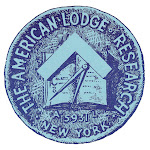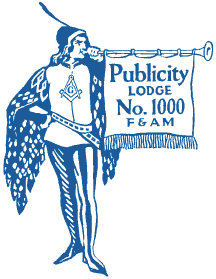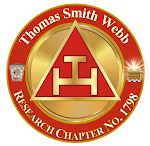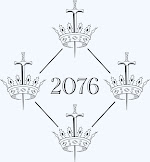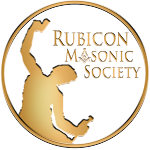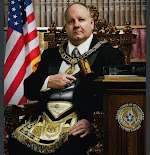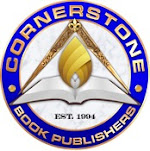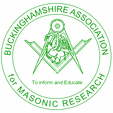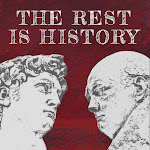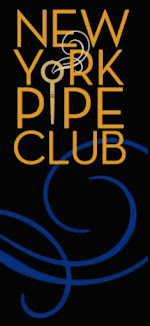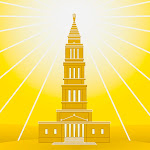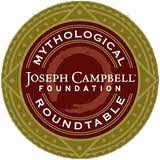
There we were at the Regular Communication of American Lodge of Research Wednesday night in the Grand Lodge of New York building to view these spectacular reproductions of historic documents. I have heard of the quality of Vatican publications, but I was unprepared for the lavish packaging and the exacting detail created by the publisher in the production of “Processus Contra Templarios.”
It isn’t only a book. In addition to the oversize multi-lingual tome there are multiple facsimile copies, published on a realistic synthetic fabric that retains the look and feel of medieval parchment, of many ancillary documents – including one text that happens to record Pope Clement’s absolution of the Templar Order of the most serious charges against them. This item, dubbed the “Chinon Parchment,” was discovered in the Vatican Secret Archives in 2001 by a researching scholar, who found it and recognized its significance. It simply had been misfiled all these centuries, obscuring a giant historical fact.

This stunning package of historical documents was purchased by the Grand Lodge of New York’s Chancellor Robert R. Livingston Masonic Library, disbursing $8,600 from a fund bequeathed to the library for the purpose of acquiring singular research materials that otherwise would elude the brethren. But what has the fate of a crusading order of knights to do with Freemasonry, and why would one of the most important Masonic research libraries in the world acquire these archival reproductions?
RW Bro. Thomas Savini, director of the library, explained, saying part of the library’s mission is to “provide resources for the experiential side of Masonry – the intangibles that drove us all to become Freemasons – for our discussion, and study, and growth.” (The only other known Masonic organization in the United States to have acquired a copy is the House of the Temple, headquarters of the Ancient and Accepted Scottish Rite in Washington. The November-December issue of “Scottish Rite Journal” features a cover story on Ill. Hoyt Samples and his wife Mitzi who lavished that donated copy of “Processus.”)
 Savini and RW Bill Thomas, who was acting Master of the lodge for the evening, continued the talk with a history of the medieval Knights Templar, from its founding to its dissolution, a story popular enough among Masons that it need not be related here, except for one interesting point Savini noted about the relationship between the French king and the Catholic pope. Explaining how Philip IV exerted control, “flexing his muscles,” Savini placed this political situation into the context of the Age of Reason. We see “a secular authority can hold more power than the pope,” he added, and in fact the king ordered the Church Inquisition to arrest the Templars. To make a long legal story short, the Order had been charged with the capital crime of heresy, plus a variety of lesser crimes, like sacrilege and sodomy, and were absolved by the pope of the former, but convicted of the latter.
Savini and RW Bill Thomas, who was acting Master of the lodge for the evening, continued the talk with a history of the medieval Knights Templar, from its founding to its dissolution, a story popular enough among Masons that it need not be related here, except for one interesting point Savini noted about the relationship between the French king and the Catholic pope. Explaining how Philip IV exerted control, “flexing his muscles,” Savini placed this political situation into the context of the Age of Reason. We see “a secular authority can hold more power than the pope,” he added, and in fact the king ordered the Church Inquisition to arrest the Templars. To make a long legal story short, the Order had been charged with the capital crime of heresy, plus a variety of lesser crimes, like sacrilege and sodomy, and were absolved by the pope of the former, but convicted of the latter.I guess by today’s standards, the knights would be fit to serve in Congress.
RW Bill Thomas, a Trustee of the Livingston Library, noted the similarity of the Templar organization structure to Freemasonry, and how that affected the Inquisition’s prosecution, explaining how junior members of the Order were arrested, but were unable to answer the Inquisition’s most serious questions due to their lack of seniority.
But about these wonderful documents and their value to historian and hobbyist alike.
 They provide “a real tactile experience,” Savini said, explaining how the synthetic material employed in the construction of the “parchments” and the deliberately placed folds, and even the replica mold stains all combine to recreate the originals. Having these facsimiles grants great freedom to scholars. “Here’s something you’d never see me do, and that would give me a heart attack if I saw anyone else doing,” he said, holding aloft one parchment measuring more than six feet in length, demonstrating how these can be handled, studied, and admired, while sparing the originals the wear and tear.
They provide “a real tactile experience,” Savini said, explaining how the synthetic material employed in the construction of the “parchments” and the deliberately placed folds, and even the replica mold stains all combine to recreate the originals. Having these facsimiles grants great freedom to scholars. “Here’s something you’d never see me do, and that would give me a heart attack if I saw anyone else doing,” he said, holding aloft one parchment measuring more than six feet in length, demonstrating how these can be handled, studied, and admired, while sparing the originals the wear and tear.And the reproduction process involved much more than photographic copying. Because of the advanced age of the documents and the manner they were folded and stored, it was necessary for restorers to employ a Wood’s lamp to project ultraviolet light onto the original parchments to reveal handwritten content otherwise misunderstood or unintelligible.
In addition to the massive book itself, and the Chinon Parchment, and that six-footer, the package includes smaller parchments containing interrogation notes, summary documents, and executive findings, some of which show Pope Clement’s handwritten notes and signature.

Other attractions appeal to a broader scope of researchers. The original documents’ authenticity and authority were attested by the wax seals of the three Papal commissioners who examined the Templars. And sure enough, viewers of the replica collection are indeed greeted by three intricately molded replica wax seals, which brought students of that art to view the collection during its seven-stop tour of the state this month in the care of Thomas and Savini. The calligraphy also lured mavens of that craft.
 “This is fascinating,” said ALR Secretary Harvey Eysman, at right. “I have a facsimile of Anderson’s Constitutions. It’s one thing to see the imperfections on those pages, but those are just copies. This is history!”
“This is fascinating,” said ALR Secretary Harvey Eysman, at right. “I have a facsimile of Anderson’s Constitutions. It’s one thing to see the imperfections on those pages, but those are just copies. This is history!”This copy of “Processus” is on hand at the Livingston Masonic Library. Library hours are:
Mondays, from 8:30 a.m. to 4:30 p.m.
Tuesdays, from noon to 8 p.m.
Wednesdays through Fridays, from 8:30 a.m. to 4:30 p.m.
The library, located on the 14th floor of the Grand Lodge building, is open to the public.
 The showing of “Processus” was not the only highlight of the lodge’s meeting. ALR also elected its officers for the ensuing year. Bill Thomas, at left, is the Master-elect, and after about a decade of service at the Treasurer’s desk, RW Ron Goldwyn was honored with unanimous election as Treasurer Emeritus. Plus a bunch of others were elected to Corresponding Membership. Congratulations brethren! The Installation of Officers will take place Monday, December 29. The 2009 meetings of American Lodge of Research are scheduled for Monday, March 30 and Thursday, October 29.
The showing of “Processus” was not the only highlight of the lodge’s meeting. ALR also elected its officers for the ensuing year. Bill Thomas, at left, is the Master-elect, and after about a decade of service at the Treasurer’s desk, RW Ron Goldwyn was honored with unanimous election as Treasurer Emeritus. Plus a bunch of others were elected to Corresponding Membership. Congratulations brethren! The Installation of Officers will take place Monday, December 29. The 2009 meetings of American Lodge of Research are scheduled for Monday, March 30 and Thursday, October 29.Whenever reporting from the Grand Lodge of New York, it is necessary to try to relay the marvelous architecture and design. In addition to viewing these photos, do take the virtual tour of the French Ionic Room.










